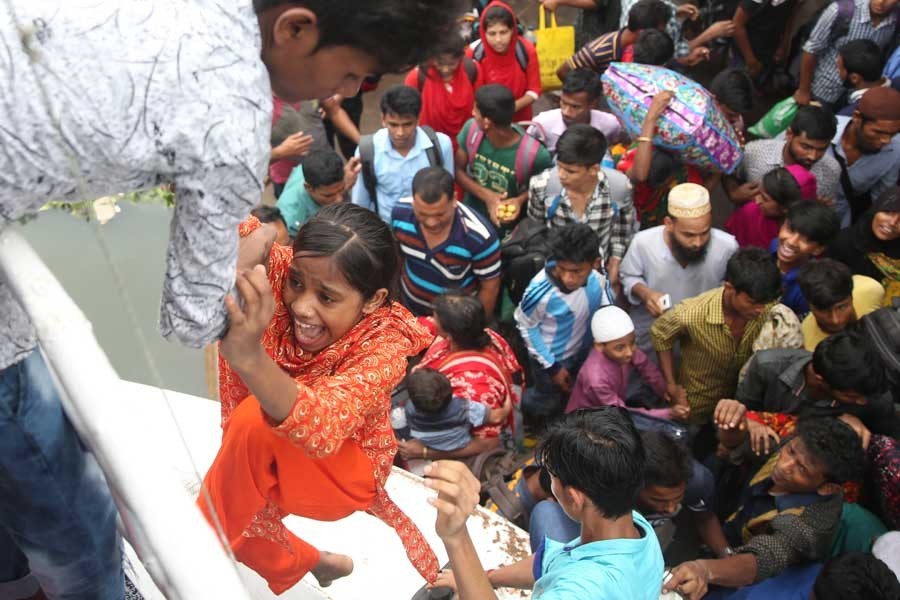Many hygiene-conscious people have fretted about the general masses' recent exodus for their village homes prior to Eid. The print media and TV channels have also shown their return to the cities, with crowd pressing against crowd, with the mandatory 'social distancing' thrown to the wind. The return was also another mad rush, though reverse in nature. The whole frenzy remained centred around the Dhaka city.
Given the terrible way the mass exodus-and-return to and from villages has taken place the conscious people have reasons to feel panicked. Few are presently unaware of the unsparing and insidious corona onslaught. Yet many might feel tempted to point out the inherent pull a large section of the city residents feel for their ancestral villages in this country.
When it comes to the two festivals of Eid, most of the city-based people dream of their villages; only a tiny percentage have the means of going to far-flung tourist spots for holidaying. What these points boil down to is the villages and their environs have an overwhelming presence in the minds of the people of Bangladesh.
Keeping aside the happier occasions of Eid or Durga Pooja, the times of ordeal or terror also witness a frantic rush for villages. During the 1971 Liberation War, accompanied by a barbaric genocide by the occupation army on the residents of Dhaka and other cities, the city residents perhaps witnessed the largest outbound exodus in the 20th century. With the marauding forces and their cohorts futilely hunting down the suspected Freedom Fighters and their sympathisers, and people being picked up indiscriminately, the city residents turned to the warm embrace of the villages. They were not disheartened. The rural people provided them with safe shelters and food. On a smaller scale, a similar episode was also enacted during the World War II in the then Bengal.
No matter to what extent the people of Bangladesh become urban and city-oriented, the greater part of their mind and ethereal being will remain engulfed by the rural landscape. It is this geographical and intangible entity of the land which is expected to pull the city residents towards villages for a long time to come. Thanks to inter-regional marital bonds and the fast spread of education, the number of the pure natives of urban Dhaka keeps dwindling. In their place, a new social segment with Dhaka as their birthplace has begun emerging since the 1950s. Most of them prefer to call themselves as native Dhaka residents, as they have been living in the city for nearly seven decades. They do not speak the typical 'Dhakaiya' dialect, but they have adopted many traditions and customs followed by the original Dhaka dwellers for centuries.
In spite of this cultural assimilation, a section of these neo-Dhakaites do not want to miss a chance to spend a few days, along with their family members, in ancestral villages on the occasion of the two Eid festivals. Though not fully acquainted with the rural norms of life, the craving for villages has yet to die out in their inner selves. Experts dealing with genetics would like to call this craving a kind of atavistic trait.
As has been studied by social observers, it is the temporary residents of the capital who are virtually irresistible in their longing for visiting their rural homesteads. Thanks to their low level of literacy, emotion turns out to be a force more dominant to them than the dreadful realities of pandemics like Covid-19.


